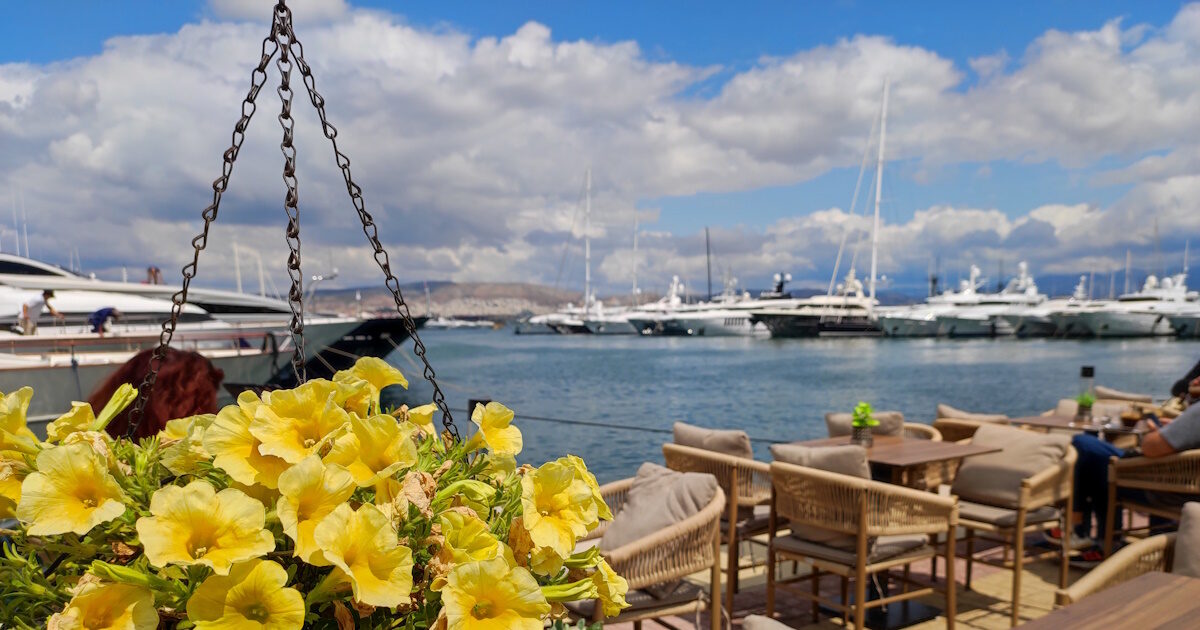A new era begins for Greek marinas, as a series of large investments form a completely different map on the sea tourism. By Athenian Riviera and East Attica to Corfu, Rhodes and Skiathos, projects of hundreds of millions are ongoing, with the aim of enhancing the country’s competitiveness and bringing it to the same level with top Mediterranean destinations.
The investment in the Metropolitan Pole of Hellenic, which concerns not only the urban fabric, but also the strengthening of marine and coastal tourism in the Athenian Riviera, is a decisive role in this new reality. Specifically, in Agios Kosmas, the place where the Greek Sailing Center has begun, the conversion to a modern facility capable of hosting large yachts.
Combined with the regeneration of the Faliro Bay, which first connects the city for the first time with its coastline, but also with works extending from Piraeus to Lavrio, the south coast of Attica turns into a single axis of recreation and tourism development. The new infrastructure is not limited to bending positions, but they pave the way for activities such as water sports, diving tourism and coastal boats, which still remain subjected to the country in relation to Western Europe.
Vouliagmeni’s marina was recently completed, with modern infrastructure and environmental upgrading. In Agios Kosmas, the place where the Greek Sailing Center has begun, the conversion to a modern facility capable of hosting large yachts.
In Flisvos, which is already a landmark of Attica, new expansion plans are being implemented, while Zea’s historic marina is proceeding with a significant upgrading of services and infrastructure. Even greater is the mobility in Alimos Marina, the largest in the Balkans and one of the most popular in the eastern Mediterranean.
There, it is foreseen to use a 210 -acre inland zone, with hotel facilities, restaurants, commercial areas, parking lots, maritime facilities and boat maintenance infrastructure so that the area can be converted into a comprehensive destination for residents and visitors.
Numbers show the size of the industry. Today, there are 39 licensed marinas in Greece, with about 13,000 berths, and 30 of them are considered high standards. At the same time, there are about 60 tourist anchorages and shelters, with unequal quality of services. The recovery fund has been provided for 140 million euros for investment in the sector, which creates an important financial background for the coming years.
But mobility is not limited to Attica. In Corfu, one of the largest investment in maritime tourism in recent decades is designed with the creation of an international marina for Mega Yachts. The amount of the investment exceeds 140 million euros and makes the project the first of this size made entirely from zero to Greece for the last twenty years.
Also important is the activity in Nafplio, where the marina is giving up to a destination with ever -increasing tourist demand, while the investment map also includes the marinas of Rhodes and Skiathos, examined for new development interventions. Marina Kalamarias, the largest in the portfolio of the Hypertension, is also considered key importance, which is expected to be re -adopted in the coming months.
Despite this momentum, there are no difficulties. Bureaucracy and time -consuming licensing procedures are still an obstacle, while local communities often deal with marinas with cautiousness. However, where there were comprehensive investments, the results were multiplier for local economies. Marinas act as open recreation areas and create high -traffic belts, enhancing focus, trade and small and medium -sized enterprises.
Greece, with the advantage of its geography and climate, is facing a unique opportunity to turn into an international node of maritime tourism. The creation of a modern network of Marinos, from Attica to the Aegean and Ionian islands, is a bet not only for tourism but also for the national economy as a whole.
The question is whether the country will be able to capitalize on this juncture so that it can pass through the announcement stage to a comprehensive development model, capable of bringing it to the center of international maritime tourism in the coming decades.
